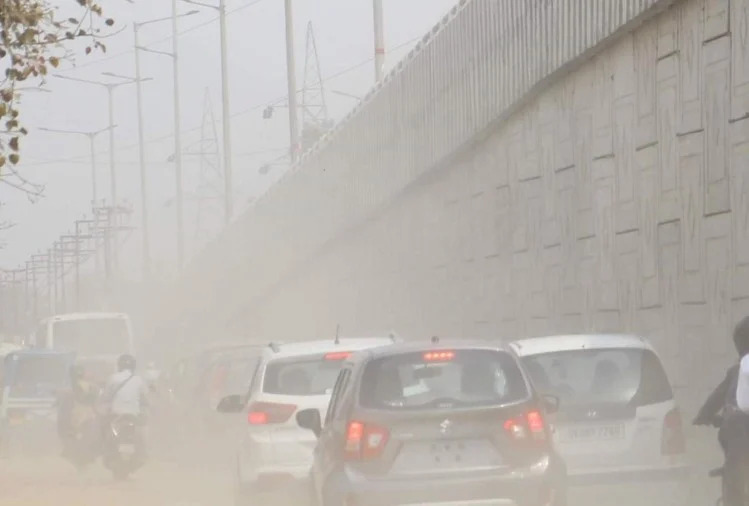Dehradun Air Pollution at dangerous level
Dehradun Air Pollution: The level of hazardous elements present in the air level in the capital remains alarming. The level of air pollution in general increases after Diwali. Although there has been some reduction during the last few days, but now due to the bad air in Delhi, Uttarakhand is also being threatened.
The pollution level has not improved even after several days in Dehradun, the capital of Uttarakhand. The spurt in air pollution and Air Quality Index (AQI) post Diwali is still there. Due to this, the risk of suffocation in breathing in Doon has also increased. According to doctors, these dangerous elements present in the air can cause harm. Especially patients with respiratory problems may have to suffer due to this.
There is a danger of impact on Uttarakhand as well.
The level of hazardous elements present in the air level in the capital remains alarming. The level of air pollution in general increases after Diwali. Although there has been some reduction during the last few days, but now due to the bad air in Delhi, Uttarakhand is also being threatened.
If this happens then people may have to face more trouble. At present, according to the Air Pollution API, the other AQI remains 86 in Doon, which is satisfactory. At the same time, the AQI of PM 2.5 remains 449, in the morning the AQI of PM 10 remains 425, which is a very dangerous level. Apart from this, 65 percent moisture has also remained in the air. There has been a satisfactory reduction only in the level of O3 AQI.
Six to seven times more pollution
According to the data of the Pollution Control Board, the smoke is dissolving in the climate of Doon. The annual average level for PM10 in the air should not exceed 20 micrograms per cubic meter and 50 micrograms per cubic meter for 24 hours. In PCB standards it should be 60 and 100 micrograms per cubic meter. Whereas in Doon it remains six to seven times more.
Pollution puts on the body
Amidst the severe level of pollution in Delhi-NCR, being in the open for a long time has a direct effect on the body. Along with the respiratory system, it affects the blood and kidneys. Let us know which parts of the body different pollutants make sick.
Months of Dust Particles, PM 10 and PM 2.5: PM 10 and PM 2.5 have been defined on the basis of size. The particles whose size is 10 micrometers or less are called PM10. Whereas particles of 2.5 micrometers and less in size are called PM 2.5. The more dangerous of these is PM 2.5. It gets mixed in the blood through the lungs with the help of breath. The World Health Organization is now asking member countries to prepare a standard for the finer particulates PM1.
Effect
Eye: Severe burning
Nose: Burning and itching
Throat: Sore throat
Lung: Asthma, Chronic brochitis,
Tissue damage Liver: Tissue damage
Heart: Threatened thickening of the surface, from obstruction of blood circulation to cancer
Poisonous gas harmful
Nitrogen Oxides: Oxides or NOxes of nitrogen are formed by the smoke emitted from the burning of petrol, diesel and coal. If it rains in the midst of their high presence in the atmosphere, it makes it acidic.
Effect
Lung: Damage to tissues,
Affects breathing ability Skin: Cancer
Nerve: Affects nervous system
Carbon monoxide: This is a poisonous gas. It is produced by the burning of gasoline, kerosene, oil, propane, coal, or wood. This harms the health of the people.
Effect
Eye: Blurred vision
Ear: Hearing
loss Blood: Fatigue and headache
Respiratory system: Chest pain
Sulfur dioxide: This gas is formed by the use of power equipment, fuel and emissions from industrial units.
Affect
Lungs: Phlegm formation
Respiratory system: decreased breathing rate, shortness of breath
Ozone formation in the presence of sunlight
Ozone: Ozone is formed in the presence of sunlight along with pollutants. It is a blue colored and odorous gas. Its presence is comparatively more near organic waste.
Effect
Eye: Watery
Throat: Sore
Lungs: Asthma
Heart: Chronic diseases, TB symptoms Possible
Respiratory system: Infection, chest contraction
Pollution affects these organs especially
eyes, nose, throat, lungs, respiratory system, heart , Liver, kidney, blood circulation, skin,
Methods of protection,
no activity of any kind should be done in the open.
Do not go for morning walk.
Refrain from stepping out of the house.
Long-term exposure to severe levels of pollution has extremely bad effects on health.
